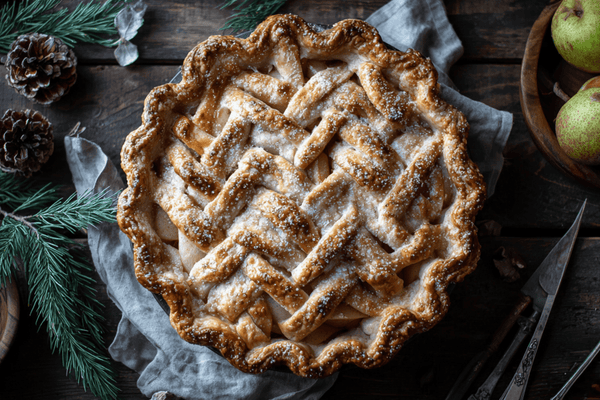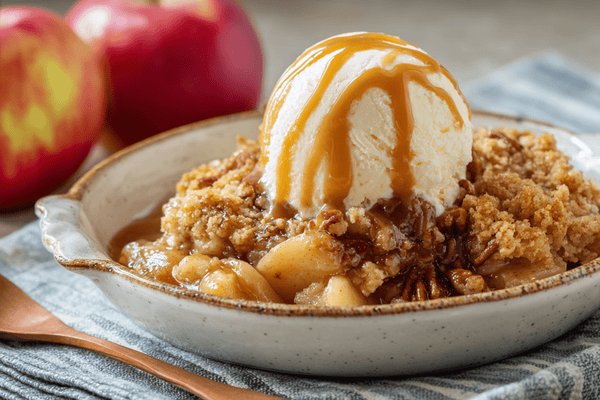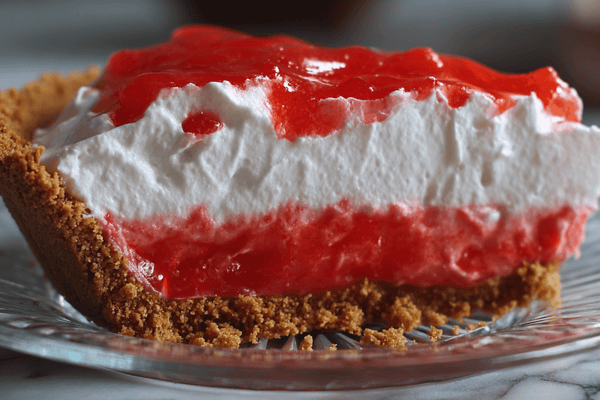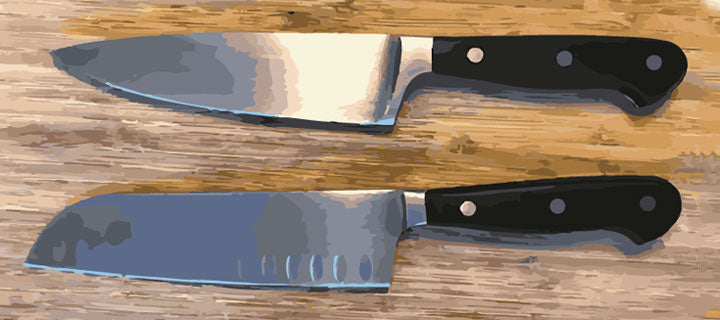
A Chef’s knife and a Santoku knife are two of the most popular knives that you’ll come across in any kitchen due in the most part to their versatility. While they may look similar at a glance it’s very easy to confuse the two.
If we are being very technical, a chef’s knife is a multi-purpose Western knife whereas a Santoku knife is the Japanese equivalent, which is an adaptation of the Western chef’s knife and can also be used for multiple cutting purposes. While the two may be quite similar it’s important to note that they are also very much different and should not be confused as being the same.
Chef's knife vs santoku - what is the difference? The main difference between a chef’s knife and a Santoku is the shape of the blade. A chef’s knife has a curved blade and is designed primarily for cutting meat, though it is multi-functional and can also be used on fish and vegetables. A Santoku knife has a much straighter edge from tip to heel with a slight upward curve and is designed for precision and thinner cuts though it can also be used for meat, fish, and vegetable cutting.
The blade and cutting intention is only the most notable difference between the two popular knives. In this article, we are going to look at what the key differences are between these two knives and when you would be best using them.
Do I need a chef's knife and a Santoku? Both are excellent knives and in order to have a solid and versatile knife collection, we’d definitely recommend having both a chef’s knife and a Santoku knife at your disposal.
Table of contents
What Is a Chef's Knife

A chef’s knife, most commonly designed and manufactured by the French or German, is the ultimate multi-purpose knife in the Western world. The popularity and multi-purpose use is the reason why it has earned the name of a chef’s knife.
Many would argue that a chef’s knife is the single most important knife that you can own and the heavier weight and pointed tip make this knife incredibly versatile for cutting through meat and bone, piercing the shell on seafood like lobsters or trimming fat, and also allowing force to be applied to harder fruits such as melons.
What Is a Santoku Knife

The Santoku is a close relative (adaptation) of the chef’s knife and is the Japanese equivalent. The word Santoku translates to “three virtues” which means that it is designed for three cutting purposes which are mincing, dicing and slicing, and chopping of meat, fish, and vegetables.
As you can tell, Santoku is a much more deliberate and technical way of describing a multi-purpose or universal knife which is how we’d refer to a Western-style chef’s knife.
A Santoku knife isn’t designed to be as much of a workhorse as the chef’s knife and is instead designed for precision and thinner cuts whilst also giving the option to slice foods which is a more common style when cooking with traditional Japanese cuisine.
You can also read more about the different types of Japanese knives in our beginner's buyers guide.
Santoku Knife vs Chef: What Is the Difference?
At a glance, a chef’s knife and Santoku will look almost identical and both are the universal workhorse knives in each respective culture, capable of cutting a variety of foods with a variety of styles.Therefore in order to find the differences between the two, you’ll need to look at the more subtle differences below and while they may be subtle, the end result is that these two knives are surprisingly different from one and another.
Size & Weight
Firstly, the size of each knife is a major difference. A chef’s knife will typically be longer with the blade measuring between 8” - 10” in length whereas a Santoku knife is slightly smaller and will measure between 5” - 8” in length.A chef’s knife is also heavier in order to facilitate the cutting of firm meat and bones whereas a Santoku knife is lighter and easier to handle for precise cutting and slicing.
Blade Design
A Western-style chef’s knife has a curved blade with a pointed tip. This design allows for the use of the more common rocking motion when cutting which allows the user to rock the blade backward and forwards against the chopping board.As mentioned above, the chef’s knife also has a longer blade which makes it better suited to cutting foods for larger parties as you don’t need to cut the item in sections which can be more time-consuming.
The Santoku blade is much straighter than the chef’s knife and the tip and heel are more closely in line with a slight curve. These blades also have a curve where the tip meets the spine in contrast to the pointed tip with a chef’s knife.
Blade Edge
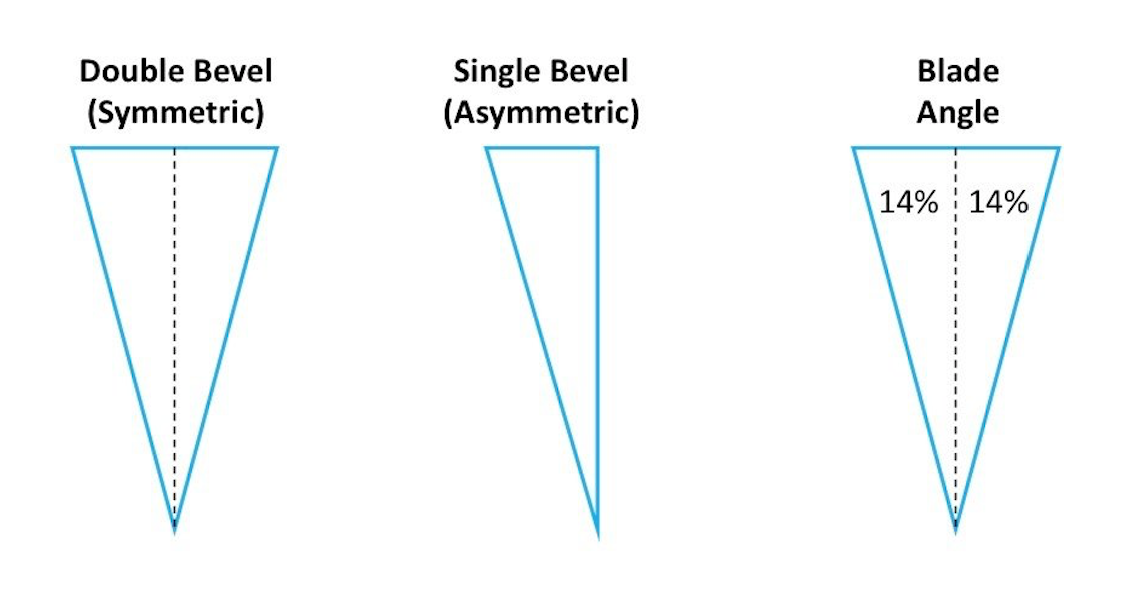
The blade's edge, or more precisely the bevel, is another difference between the two knives though it’s worth pointing out that the popularity of the Santoku knife in Western countries has seen it take on some similar characteristics to the chef’s knife which include the bevel.
A traditional Santoku knife will have a single bevel meaning that one side of the blade is flat whereas the other side will have a tapered edge (bevel) which is used to form a sharper edge for precise cutting. The bevel angle of a Santoku knife is also smaller (typically 15 degrees) which again allows for a sharper edge.
A chef’s knife is double bevelled and typically has a wider angle. A double bevel means that the blade is tapered on both sides and a typical angle would be 20 degrees on each side to form a chef knives blade edge.
As mentioned, Santoku blades have taken on some Western characteristics to match the popularity, and whilst a lot of Santoku blades can now be found to have a double bevel, they still maintain a sharper edge by using a 15-degree angle on either side to form the edge.
Cutting Style
The cutting style is strongly linked to the blade design for both knives and is a further way to tell the difference between the two knives.
Santoku vs chef knife - the curved edge of a chef’s knife is designed for a rocking action against the chopping board when cutting whereas the Santoku knife is designed to cut with a traditional Japanese chopping style in a forward and backward motion.
For tips on the best way to hold a Santoku knife, please see 'How do Japanese chefs hold their knives? An introduction to grip and technique'.
Sharpening Technique
Finally, the way to sharpen both of these knives is different as a result of the different blade shapes and material that form the edge. A Santoku knife will typically have a blend of high carbon and steel blend to form a sharper edge that’s also free from rust and corrosion and should maintain an edge for longer.A Western Chef’s knife is softer but has tougher steel for heavy-duty use which means the blade will need to be sharpened much more frequently in order to maintain a sharp edge. You can read more about this in 'How to Correctly Sharpen vg10 Japanese Blades'.
Which Is Better
This is a surprisingly common question however the disappointing answer is that neither knife is better than the other. People love to have a definite answer when comparing items however the truth is that both knives have different features and offer different cutting styles.
If you need precision cutting and won’t be working with tougher meats or vegetables than a Santoku knife is a great option whereas if you are cutting with larger food items or tough meat then the chef’s knife will be ideal.
This will all depend however on your preferred cutting style, what you are cutting, and also how many people (or how much volume) you are cutting for. Therefore in our opinion, it’s best to have both knives available to you in order to make use of both of their excellent cutting capabilities depending on your needs.
FAQ
Q: What is a chef's knife?
A: A chef's knife is a versatile kitchen tool with a wide, curved blade that tapers to a sharp point. It is designed for various cutting tasks, including chopping, slicing, dicing, and mincing. Chef's knives are known for their all-purpose functionality and are commonly used by professional chefs and home cooks alike.
Q: What is a Santoku knife?
A: A Santoku knife is a Japanese-style knife that translates to "three virtues" or "three uses" in Japanese. It features a shorter, wider blade with a straighter edge compared to a chef's knife. The Santoku is designed for three primary cutting techniques: slicing, dicing, and chopping. It has become increasingly popular in Western kitchens.
Q: What are the main differences between a chef's knife and a Santoku knife?
A: The main differences between a chef's knife and a Santoku knife lie in their blade design and cutting technique. Chef's knives have a longer and more curved blade, suitable for rocking motions and precise slicing. Santoku knives have a shorter and wider blade, facilitating a more up-and-down chopping motion. Santokus are ideal for push cuts and are well-suited for slicing and dicing vegetables.
Q: Which knife is better, a chef's knife or a Santoku knife?
A: The choice between a chef's knife and a Santoku knife depends on personal preference and the intended use. Chef's knives excel at tasks that require a rocking motion or longer strokes, such as cutting herbs or slicing meat. Santoku knives are great for precision tasks like chopping vegetables, and their shorter length can be more manageable for some users. It ultimately comes down to your cutting style and the tasks you perform most often in the kitchen.
Q: Can a Santoku knife replace a chef's knife?
A: While a Santoku knife can handle many kitchen tasks, it may not entirely replace a chef's knife, especially if you frequently perform tasks that require a rocking motion or need a longer blade. Chef's knives are more versatile for a wide range of cutting techniques, making them a go-to choice for many chefs. However, if you prefer the Santoku's design and cutting style, it can serve as an excellent primary knife in your kitchen.
Q: Which knife is easier for beginners to use, a chef's knife or a Santoku knife?
A: Both chef's knives and Santoku knives can be suitable for beginners, but it often depends on personal preference and comfort. Some beginners find the shorter length and lighter weight of a Santoku knife easier to handle and control. However, others may prefer the longer blade and curved profile of a chef's knife for certain tasks. It's best to try out both types of knives and choose the one that feels more comfortable and natural to you.
Q: Can I use a chef's knife and a Santoku knife interchangeably?
A: Yes, you can use a chef's knife and a Santoku knife interchangeably for many kitchen tasks. While they have different blade designs and cutting techniques, both knives can handle various cutting, chopping, and slicing tasks. Experiment with both knives to see which one you prefer for specific tasks, and feel free to switch between them based on your needs and comfort.
Q: Are chef's knives and Santoku knives available in different sizes?
A: Yes, both chef's knives and Santoku knives come in various sizes to accommodate different preferences and cutting needs. They can range from smaller sizes around 6 inches in length to larger sizes of 10 inches or more. Choose a size that feels comfortable and suits the tasks you frequently perform in the kitchen.
Q: Do chef's knives and Santoku knives require special maintenance?
A: Both chef's knives and Santoku knives require regular maintenance to ensure their longevity and performance. It is important to keep the blades clean and dry after each use to prevent rust and corrosion. Handwashing with mild soap and warm water is recommended, as harsh detergents or dishwashers can damage the blade. Additionally, honing the knives regularly using a honing rod or sharpening them when needed will help maintain their sharpness.
Q: Can I sharpen chef's knives and Santoku knives myself?
A: While it is possible to sharpen chef's knives and Santoku knives at home, it requires proper technique and tools. Many knife enthusiasts prefer to have their knives professionally sharpened to ensure the best results. However, if you're comfortable with sharpening, you can invest in a quality sharpening stone or use an electric knife sharpener. Just remember to follow the manufacturer's instructions and take your time to achieve the desired sharpness.
Q: Which knife is more suitable for cutting meat and poultry, a chef's knife or a Santoku knife?
A: Both chef's knives and Santoku knives can be used for cutting meat and poultry. However, due to its longer and curved blade, a chef's knife is often preferred for tasks that involve larger cuts of meat, such as slicing roasts or filleting fish. The rocking motion of a chef's knife allows for precise and efficient cutting. On the other hand, a Santoku knife can still handle meat and poultry tasks but is better suited for smaller cuts or boneless meats.
Q: Are there any safety tips to keep in mind while using chef's knives and Santoku knives?
A: Safety is crucial when using any type of knife. Here are some important tips to keep in mind:
- Always maintain a firm grip on the handle and keep your fingers away from the blade while cutting.
- Use a cutting board that provides stability and grip to prevent accidents.
- Take your time and use a controlled motion when cutting to avoid slips.
- Keep knives sharp, as dull blades can be more dangerous.
- Store knives in a safe and secure manner, such as in a knife block or a protective sheath.
- When not in use, never leave knives in sinks or dishwashers where they can be accidentally grabbed.
- Always clean and dry knives carefully to prevent accidents during handling.
By following these safety tips, you can minimize the risk of accidents and ensure a safe and enjoyable cooking experience.
Final Thoughts
Santoku knife vs chef knife? Both the chef’s knife and the Santoku are two of the most popular knives on the market and are the universal workhorses for both respective cultures. In recent years the Santoku has become increasingly common in the Western world and has taken on some of the chef’s knives characteristics as a result.
Despite this, the two knives are still very different and the use will depend on the size or type of food you are cutting, how precise you need to be, and ultimately, which knife you prefer to use.
Hopefully, you now have a better understanding of the two knives and if possible will look to make use of both within your kitchen.
